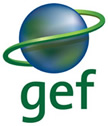Climate change vulnerability assessments
The boundaries and names shown, and the designations used on this
map do not imply official endorsement or acceptance by the United
Nations or IUCN
Name
Foret de Sangako
WDPA ID
352696
Country
SEN
IUCN category
Not Reported
Species vulnerable to climate change
According to Traits-based Vulnerability Assessments (TVAs)
| Vulnerable Species | Total Species | ||
|---|---|---|---|
| Amphibian |
3
|
23
|
|
| Bird |
54
|
387
|
|
| Mammal |
3
|
76
|
|
| Total | 60 |
486 |
12 % of bird, amphibian, and mammal species assessed are considered vulnerable to climate change
Expected species turnover
According to Species Distribution Models (SDMs)
Percentage of species turnover: Median (95% Confidence Interval)
| by 2010-2039 | by 2040-2069 | ||
|---|---|---|---|
| Bird |
|
|
|
| Mammal |
|
|
|
| Amphibian |
|
|
Vulnerable species
| Name | Order | Exposure by 2010-2039 by 2040-2069 |
IUCN Red List category | Sensitivity to climate change |
Adaptability to climate change |
|---|---|---|---|---|---|
| Caprimulgus europaeus | Caprimulgiformes |
|
LC |
|
|
| Falco peregrinus | Falconiformes |
|
LC |
|
|
| Himantopus himantopus | Charadriiformes |
|
LC |
|
|
| Lybius vieilloti | Piciformes |
|
LC |
|
|
| Pelecanus onocrotalus | Pelecaniformes |
|
LC |
|
|
| Tringa totanus | Charadriiformes |
|
LC |
|
|
| Anas crecca | Anseriformes |
|
LC |
|
|
| Chelictinia riocourii | Falconiformes |
|
LC |
|
|
| Ciconia nigra | Ciconiiformes |
|
LC |
|
|
| Numenius arquata | Charadriiformes |
|
NT |
|
|
| Rhinopomastus aterrimus | Coraciiformes |
|
LC |
|
|
| Torgos tracheliotos | Falconiformes |
|
VU |
|
|
| Apus apus | Apodiformes |
|
LC |
|
|
| Circus macrourus | Falconiformes |
|
NT |
|
|
| Falco alopex | Falconiformes |
|
LC |
|
|
| Anas acuta | Anseriformes |
|
LC |
|
|
| Apus pallidus | Apodiformes |
|
LC |
|
|
| Bucorvus abyssinicus | Coraciiformes |
|
LC |
|
|
| Accipiter erythropus | Falconiformes |
|
LC |
|
|
| Ciconia ciconia | Ciconiiformes |
|
LC |
|
|
| Circus pygargus | Falconiformes |
|
LC |
|
|
| Hieraaetus pennatus | Falconiformes |
|
LC |
|
|
| Lymnocryptes minimus | Charadriiformes |
|
LC |
|
|
| Tringa erythropus | Charadriiformes |
|
LC |
|
|
| Circaetus gallicus | Falconiformes |
|
LC |
|
|
| Upupa epops | Coraciiformes |
|
LC |
|
|
| Circaetus beaudouini | Falconiformes |
|
VU |
|
|
| Circus aeruginosus | Falconiformes |
|
LC |
|
|
| Elminia longicauda | Passeriformes |
|
LC |
|
|
| Aythya nyroca | Anseriformes |
|
NT |
|
|
| Streptopelia turtur | Columbiformes |
|
LC |
|
|
| Recurvirostra avosetta | Charadriiformes |
|
LC |
|
|
| Streptopelia roseogrisea | Columbiformes |
|
LC |
|
|
| Cuculus canorus | Cuculiformes |
|
LC |
|
|
| Gyps fulvus | Falconiformes |
|
LC |
|
|
| Pernis apivorus | Falconiformes |
|
LC |
|
|
| Telacanthura ussheri | Apodiformes |
|
LC |
|
|
| Tauraco persa | Cuculiformes |
|
LC |
|
|
| Bycanistes fistulator | Coraciiformes |
|
LC |
|
|
| Nicator chloris | Passeriformes |
|
LC |
|
|
| Prodotiscus insignis | Piciformes |
|
LC |
|
|
| Pogoniulus bilineatus | Piciformes |
|
LC |
|
|
| Camaroptera chloronota | Passeriformes |
|
LC |
|
|
| Nectarinia verticalis | Passeriformes |
|
LC |
|
|
| Buteo buteo | Falconiformes |
|
LC |
|
|
| Haematopus ostralegus | Charadriiformes |
|
LC |
|
|
| Chlidonias niger | Charadriiformes |
|
LC |
|
|
| Aythya ferina | Anseriformes |
|
LC |
|
|
| Aythya fuligula | Anseriformes |
|
LC |
|
|
| Lamprotornis splendidus | Passeriformes |
|
LC |
|
|
| Calidris alpina | Charadriiformes |
|
LC |
|
|
| Passer domesticus | Passeriformes |
|
LC |
|
|
| Larus genei | Charadriiformes |
|
LC |
|
|
| Sterna hirundo | Charadriiformes |
|
LC |
|
|
The full description of the methodology used for this assessment can be downloaded here: Traits-based Vulnerability Assessments
Expected changes in climate suitability
| Name | By 2010-2039 | By 2040-2069 |
|---|
The full description of the methodology used for this assessment can be downloaded here: Species Distribution Model










